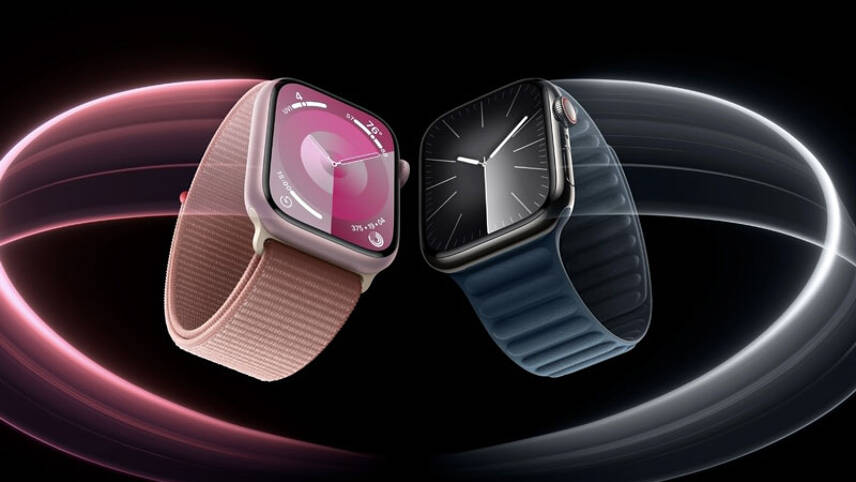Register for free and continue reading
Join our growing army of changemakers and get unlimited access to our premium content

The new Apple Watch Series features recycled aluminum and cobalt. Image: Apple
The Apple product launch event is a highlight in the calendar for anyone working in digital technology. At its headquarters in California on Tuesday (12 September), Apple launched its new iPhone 15 series and ninth Apple Watch series, plus its second iteration of Apple Watch Ultra.
Apple has stated that the new Apple Watch lineup consists solely of carbon-neutral products. It has delivered a 75% reduction in the life-cycle emissions of its watches since 2015 due to investments in clean energy procurement, energy efficiency and reducing transport emissions.
Product re-design and supply chain engagement have also driven reductions in emissions. Each of the watches includes at least 30% recycled or renewable material by weight, for example, including a 100% recycled aluminium casing and 100% recycled cobalt in the battery.
It bears noting that Apple’s carbon accounting for the carbon-neutral claim also covers consumer use of products.
In a statement, the firm said: “Electricity for manufacturing and charging devices represents the largest source of Apple’s emissions across all product lines. To address the latter, Apple has committed to invest in large-scale solar and wind projects around the world. For the carbon-neutral Apple Watch models, the company will match 100% of customers’ expected electricity use for charging.”
To address the 25% residual emissions associated with the watches, Apple will invest in carbon credits “primarily from nature-based projects”.
It has stated an intention to ensure that carbon credits are “high-quality” by assessing whether they represent additional, measurable, quantified and permanent carbon removal. Another key requirement is that the credits are not double-counted.
A surprise move?
Science reporter Justine Calma has argued that Apple’s announcement distracts from the company’s overall impact on climate and the environment. She said a far more important measure of the firm’s work on climate will be whether it delivers its 2030 and 2050 goals.
Apple achieved carbon neutrality for its global corporate operations in 2020 and subsequently pledged to deliver a carbon-neutral value chain by 2030.
It is seeking to reduce emissions upstream and downstream by at least 75% on 2015 levels, only relying on offsetting for a maximum of 25% of residual emissions.
Apple has described this ambition as “aggressive”. Meeting this goal will require increased investments in decarbonising national electricity grids; low-carbon transport innovations and transport efficiencies; product re-design and material innovation.
On the latter, Apple is working to switch to 100% recycled cobalt in batteries, plus 100% recycled tin soldering and gold plating in circuit boards, by 2025. It is also ending the use of leather across all product lines with immediate effect, switching to a new ‘FineWoven’ textile made from 68% post-consumer recycled fibres.
Apple continues to use the language of carbon neutrality despite a forthcoming crackdown on this kind of claim in the EU. Lawmakers voted in May to support a new directive that will prevent companies from badging consumer goods as ‘carbon-neutral’ or ‘carbon-negative’ if they use offsetting. Only time will tell how Apple will choose to communicate its climate efforts to customers in the EU once this directive comes into force.
Charging port changes
Another sustainability-related facet of Apple’s latest product launch is the switch from the Apple-exclusive ‘lightning’ charging port to a USB-C port for the iPhone 15.
The change is being made because the EU is mandating that all electronic devices sold within the bloc from 2024 use USB-C charging, in a bid to reduce the e-waste generated by the need for each home to have an array of different chargers.
In the long-term, the result is likely to be waste reduction. But, in the coming months, there are concerns that there will be a spike in the discarding of Apple ‘lightning’ cables. It is estimated that one-quarter of European residents own an iPhone.


Please login or Register to leave a comment.